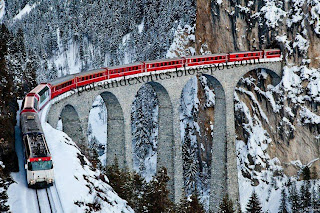Researchers led by experts from Oxford University warn that a 1.5C
temperature rise would melt Siberia’s permafrost, which would in turn
release hundreds of gigatonnes of stored carbon dioxide and methane into
the atmosphere. Covering nearly a quarter of the northern hemisphere,
this ticking carbon bomb would speed up global warming and cause
widespread climate change. However, it would
likely take a few decades for the permafrost to melt and therefore
greenhouse gas emissions would initially trickle into the atmosphere.
The researchers studied stalactites and stalagmites in Siberia that
formed hundreds of thousands of years ago when temperatures rose. By
cutting into the icy structures, the scientists were able to determine
when their growth accelerated and slowed; they then compared this
information to climate conditions at the time. Based on these
measurements, they determined that the 400,000 year old cave formations
in a far northern cave grew when temperatures were 1.5C higher than they
were prior to the industrial revolution. But in places where there was
only a 0.5-1.0C temperature rise, no such formations occurred,
suggesting that 1.5C is “a tipping point,”.
“I would expect to see continuous permafrost start to thaw along the boundaries at this threshold of 1.5C [in future],” Anton Vaks, lead researcher from Oxford University. This melting and subsequent climate change would have a resounding impact on the surrounding environment, Vaks continued. Arid areas, including the Gobi Desert, could become much wetter, but more research must be done to establish the rate at which these changes are expected to occur.
“I would expect to see continuous permafrost start to thaw along the boundaries at this threshold of 1.5C [in future],” Anton Vaks, lead researcher from Oxford University. This melting and subsequent climate change would have a resounding impact on the surrounding environment, Vaks continued. Arid areas, including the Gobi Desert, could become much wetter, but more research must be done to establish the rate at which these changes are expected to occur.



























.jpg)










